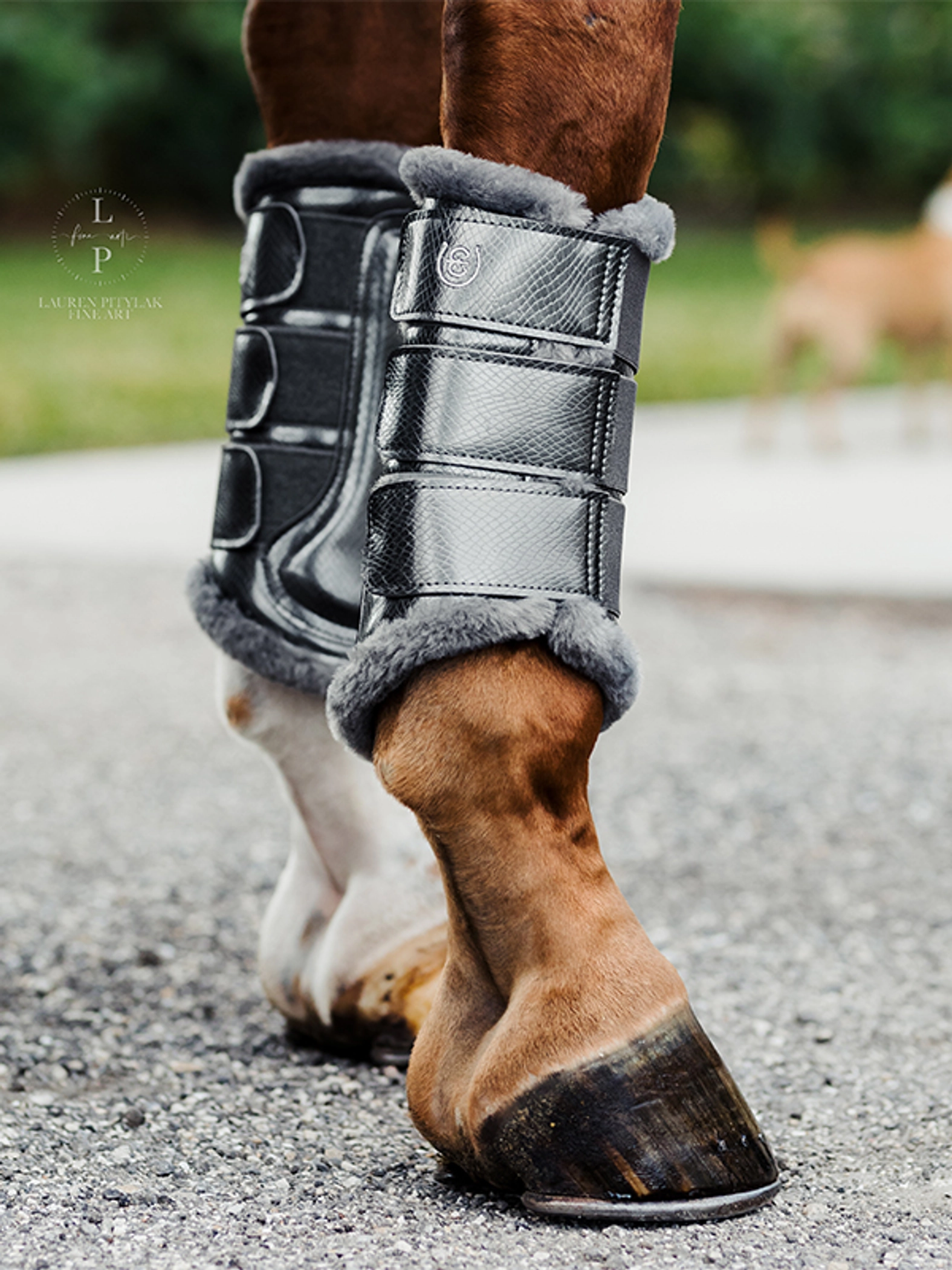Do we need horse boots?
A horse boot is a protective boot or wrap designed to prevent a horse’s lower leg or hoof from experiencing injury.

These injuries could result from hacking on rough terrain or damage from any gait. Horse boots offer protection and also absorb shock when a horse’s hoof hits the ground. Have you ever noticed scabs on the inside of your horse’s fetlocks? This may be due to brushing or rough play in the field, and your horse may need boots. If your horse regularly injures the inside his fetlock or pastern, has sustained a more significant injury, or is regularly walking on rough terrain, boots will help protect from injury.
Sporting riders should use horse boots during riding, lunging, or turnout since their horses are typically moving at a faster speed, providing a greater opportunity for injury. And of course, jumping can cause injury if a horse nicks or doesn’t clear a fence. In general, pleasure riders don’t need leg protection for their horses, unless they travel on rough terrain or unless the horse has a problem with its walk or their gait.
Horse boots are available in a variety of materials including leather, sheepskin, gel, neoprene, webbing or plastic. They can have buckles, hook and stud closures, or hook and loop closures. Horse boots generally come in pairs with the closures on the outside of the horse’s leg to ensure that they don’t interfere with each other and come undone, potentially causing injury to the horse.
If you decide to use horse boots, it’s important that they fit well and be kept clean from built-up dirt and sweat. You should also check often to ensure the boots aren’t chafing and inadvertently causing injury.
Types of Horse Boots
There are a number of different types of horse boots that protect different parts of your horse’s lower leg and hooves in different ways.
Overreach Boots
The bell shape of these boots circles the entire hoof and protects the heel as well. Overreach boots, also called bell boots, are used to prevent overreaching, where a horse hits his front heels with the toes of his back feet. They can be worn while riding or in the paddock. Bell boots protect the hooves from tough or muddy terrain, and they protect from hitting a hard surface when jumping or negotiating obstacles. They can be worn on the front and the back.
A pull-on style is considered the most secure, but they can be challenging to get off and on. Pull-ons also offer the best protection since they have no opening. Buckle closures or hook-and-loop fasteners are also used as they are easier to put on and take off. However, they can be more prone to get clogged by dirt, depending on the terrain. They also have a greater risk of falling off, so it’s important to put them on properly and regularly ensure that they are latched.
Brushing Boots
Brushing boots are one of the most popular choices when it comes to horse boots. They are versatile boots designed to be used for training, flatwork, lunging, hacking, or turnout. They protect the lower part of the horse’s leg from the opposite hoof knocking into it, which is referred to as brushing.
Fetlock boots
Fetlock boots are generally used for show jumping with tendon boots to provide protection and can be used for schooling and competition, when allowed.
Fetlock boots generally come in two designs. One is more of an all-purpose boot, where additional padding is provided inside the fetlock. The other wraps around the back of the joint and leaves the front of the boot open.
Tendon Boots
Tendon boots are worn on a horse’s front legs. They are designed to protect the tendon area from strikes from the hind hooves which can occur when landing a jump. Tendon boots also protect the inside of the legs from brushing injuries caused when a hoof catches the leg.
Just like with fetlock boots, open-fronted boots are available that enable a horse to feel a pole during jumping. Closed-tendon boots protect the front of the leg as well as the tendon area and are often recommended when eventing due to the risk of injury from solid fences when they are allowed.
Hoof Boots
These boots protect the horse’s sole and are sometimes used instead of horseshoes. Hoof boots can be used temporarily, during a transition to going shoeless, for medical reasons if a horse cannot wear shoes, or if a horse loses a shoe. They are used for all riding disciplines and protect the sole of the hoof from rough terrain.
Therapeutic Boots
Therapeutic Boots can be magnetic, heated or cool. Therapeutic boots help horse’s heal faster from injuries or can be used as rehabilitation or massage. Hoof therapy boots can be used with your horse’s medication and they also protect the hoof from dirt and oils.
Travel Boots
Travel boots, are used to protect a horse’s lower legs, and sometimes hocks, from injury while traveling in a trailer. They are usually faster to put on than bandages and offer a comfortable fit.
We use brushing boots for jumping and driving and travel boots for travelling. Depending on what you do with your horse hopefully this article will help.

